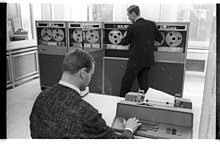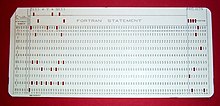Computer Operation Level-3 Suggestion V-3
Written Test Computer Operation Level-3 Suggestion V-3 by Job Edu BD
First, test yourself with the following MCQs, if you can’t do it, you can check the answer by clicking on the answer button.
Computer Operation Level-3 Suggestion V-3
1. The key F12 opens a
- Save As dialog box
- Open dialog box
- Save dialog box
- Close dialog box
2. What is the smallest and largest font size available in Font Size tool on formatting toolbar?
- 8 and 72
- 8 and 64
- 12 and 72
- None of above
3. After typing header text, how can you quickly enter footer text?
- Press Page Down key and type the text for footer
- Click on Switch between Header & Footer then type the text
- Both of above
- None of above
4. You can activate a cell by
- Pressing the Tab key
- Clicking the cell
- Pressing an arrow key
- All of above
5. What is the term used when you press and hold the left mouse key and more the mouse around the slide?
- Highlighting
- Dragging
- Selecting
- Moving
6. Which of these toolbars allows changing of Fonts and their sizes?
- Standard
- Formatting
- Print Preview
- None of these
7. What is the function of CTRL+R in MS-Word
- Open the Print dialog box
- Update the current Web page
- Close the current window
- None of these
8. What is the default number of lines to drop for drop cap?
- 3
- 10
- 15
- 20
9. Macros are:
- Small programs created in MS-Word to automate repetitive tasks by using VBA
- Small add-on programs that are installed afterwards if you need them
- Programming language that you can use to customize MS-Word
- Large tools in Word such as mail merge
10. Why Drop Caps are used in document?
- To drop all the capital letters
- To automatically begin each paragraph with capital letter
- To begin a paragraph with a large dropped initial capital letter
- None of These
11. If you want to keep track of different editions of a document which features will you use?
- Editions
- Versions
- Track Change
- All of above
12. How can you disable extended selection mode?
- Press Del to disable
- Press F8 again to disable
- Press Esc to disable
- Press Enter to disable
13. Which of the following should be used when you want to add a slide to an existing presentation?
- File, add a new slide
- Insert, new slide
- File Open
- File, New
14. A bookmark is an item or location in document that you identify as a name for future reference. Which of the following task is accomplished by using bookmarks?
- To mark the ending of a paragraph of document
- To add anchors in web page
- To add hyperlinks in webpage
- To quickly jump to specific location in document
15. From which menu you can insert Header and Footer?
- Format menu
- View Menu
- Tools Menu
- Insert Menu
16. AutoCorrect was originally designed to replace _________ words as you type.
- Grammatically incorrect
- Short, repetitive
- Misspelled
- None of the above
17. It is possible to _______ a data source before performing a merge.
- Modify
- Sort
- Create
- All of the above
18. How can you apply exactly the same formatting you did to another text?
- Copy the text and click on Paste Special tool on new place
- Select the text then click on Format Painter and select the new text
- Copy the text and paste in new location. Then type the new text again
- All of above
19. What is the extension of Word files?
- DOT
- TXT
- FIL
- DOC/DOCX
20. Except for the …… function, a formula with a logical function shows the word “TRUE” or “FALSE” as a result
- IF
- AND
- OR
- NOT
21. Which of the following is a correct order of precedence in a formula calculation?
- Multiplication and division, exponential positive and negative value
- Multiplication and division, positive and negative values, addition and subtraction
- Addition and subtraction, positive and negative values, exponentiation
- None of above
22. If you are working in English (US), Chinese or Japanese, Excel 2002 can speak data as you enter it, to help you verify accuracy. How do you activate this feature?
- Point to speech on the tools menu, and then click show text to speech toolbar.
- Click validation on the data menu
- Point to speech on the tools menu, and then click speech recognition
- All of above
23. Each excel file is a workbook that contains different sheets. Which of the following cannot be a sheet in workbook?
- Work sheet
- Chart sheet
- Module sheet
- Data sheet
24. Where can you change automatic or manual calculation mode in Excel?
- Double CAL indicator on status bar
- Go to Tools >> Options >> Calculation and mark the corresponding radio button
- Both of above
- None of above
25. Which of the cell pointer indicates you that you can make selection?
- Doctor’s symbol (Big Plus)
- Small thin plus icon
- Mouse Pointer with anchor at the tip
- None of above
26. MS Excel provides the default value for step in Fill Series dialog box
- 0
- 1
- 5
- 10
27. The Delete key of keyboard is assigned to which command in Excel?
- Edit >> Clear >> Contents
- Edit >> Clear >> All
- Edit >> Delete
- All of above
28. Which of the following is not true about Find and Replace in Excel
- You can search for bold and replace with italics
- You can decide whether to look for the whole word or not
- You can search in formula too
- You can search by rows or columns or sheets
29. Material consisting of text and numbers is best presented as
- A table slide
- A bullet slide
- A title slide
- All of the above
30. You can create a new presentation by completing all of the following except
- Clicking the new button on the standard toolbar
- Clicking file, new
- Clicking file open
- Pressing ctrl + N
1. The key F12 opens a
A. Save As dialog box
2. What is the smallest and largest font size available in Font Size tool on formatting toolbar?
A. 8 and 72
3. After typing header text, how can you quickly enter footer text?
C. Both of above
4. You can activate a cell by
D. All of above
5. What is the term used when you press and hold the left mouse key and more the mouse around the slide?
B. Dragging
6. Which of these toolbars allows changing of Fonts and their sizes?
B. Formatting
7. What is the function of CTRL+R in MS-Word
D. None of these
8. What is the default number of lines to drop for drop cap?
A. 3
9. Macros are:
A. Small programs created in MS-Word to automate repetitive tasks by using VBA
10. Why Drop Caps are used in document?
C. To begin a paragraph with a large dropped initial capital letter
11. If you want to keep track of different editions of a document which features will you use?
B. Versions
12. How can you disable extended selection mode?
C. Press Esc to disable
13. Which of the following should be used when you want to add a slide to an existing presentation?
B. Insert, new slide
14. A bookmark is an item or location in document that you identify as a name for future reference. Which of the following task is accomplished by using bookmarks?
D. To quickly jump to specific location in document
15. From which menu you can insert Header and Footer?
B. View Menu
16. AutoCorrect was originally designed to replace _________ words as you type.
C. Misspelled
17. It is possible to _______ a data source before performing a merge.
D. All of the above
18. How can you apply exactly the same formatting you did to another text?
B. Select the text then click on Format Painter and select the new text
19. What is the extension of Word files?
D. DOC/DOCX
20. Except for the …… function, a formula with a logical function shows the word “TRUE” or “FALSE” as a result
A. IF
21. Which of the following is a correct order of precedence in a formula calculation?
D. None of above
22. If you are working in English (US), Chinese or Japanese, Excel 2002 can speak data as you enter it, to help you verify accuracy. How do you activate this feature?
A. Point to speech on the tools menu, and then click show text to speech toolbar.
23. Each excel file is a workbook that contains different sheets. Which of the following cannot be a sheet in workbook?
D. Data sheet
24. Where can you change automatic or manual calculation mode in Excel?
B. Go to Tools >> Options >> Calculation and mark the corresponding radio button
25. Which of the cell pointer indicates you that you can make selection?
A. Doctor’s symbol (Big Plus)
26. MS Excel provides the default value for step in Fill Series dialog box
B. 1
27. The Delete key of keyboard is assigned to which command in Excel?
A. Edit >> Clear >> Contents
28. Which of the following is not true about Find and Replace in Excel
D. You can search by rows or columns or sheets
29. Material consisting of text and numbers is best presented as
A. A table slide
30. You can create a new presentation by completing all of the following except
C. Clicking file open
"You will pass just by asking the mentioned questions, it's not like that at all, but chances are upto 80% to get common. This is just a suggestion. This question is not copied from any board question"
A computer operator is a role in IT which oversees the running of computer systems, ensuring that the machines, and computers are running properly. The job of a computer operator as defined by the United States Bureau of Labor Statistics is to “monitor and control … and respond to … enter commands … set controls on computer and peripheral devices. This Excludes Data Entry.”
Overview
The position has evolved from its beginnings in the punched card era. A Bureau of Labor Statistics report published in 2018 showed that, in the public sector, a major employer of those categorized as Computer Operator was United States Postal Service. In the private sector, companies involved in data processing, hosting, or related services employed computer operators at an even higher rate. The states with the highest employment for computer operators, as of 2018, are: New York, Texas, California, New Jersey, and Florida.
Job role description
The former role of a computer operator was to work with mainframe computers which required a great deal of management day-to-day including manually running batch jobs; however, now they often work with a variety of different systems and applications. The computer operator normally works in a server room or a data center, but can also work remotely so that they can operate systems across multiple sites. Most of their duties are taught on the job,[citation needed] as their job description will vary according to the systems they help to manage.
Responsibilities of a computer operator may include:
- Monitor and control electronic computer and peripheral electronic data processing equipment to process business, scientific, engineering, and other data according to operating instructions.
- Monitor and respond to operating and error messages.
- May enter commands at a computer terminal and set controls on computer and peripheral devices.
- Excludes “Computer Occupations” (15-1100) and “Data Entry Keyers” (43-9021).
The role also includes maintaining records and logging events, listing each backup that is run, each machine malfunction and program abnormal termination. Operators assist system administrators and programmers in testing and debugging of new systems and programs prior to their becoming production environments.
Modern-day computing has led to a greater proliferation of personal computers, with a rapid change from older mainframe systems to newer self-managing systems. This is reflected in the operator’s role. Tasks may include managing the backup systems, cycling tapes or other media, filling and maintaining printers. Overall the operator fills in as a lower level system administrator or operations analyst. Most operations departments work 24×7.
A computer operator also has knowledge of disaster recovery and business continuity procedures. Formerly, this would have meant sending physical data tapes offsite, but now the data is more than likely transmitted over computer networks.
Specializations
Console operator
A console operator interacts with a front panel or a multi-user system’s console
- entering system commands via a keyboard
- entering commands for a subsystem, e.g., HASP, via a keyboard
- replying to requests for information
- taking actions such as mounting computer tapes that were “pulled” by a tape librarian
- supervising a tape operator, especially when there is a non-specific mount request.
These individuals would be trained to use specialized equipment related to their duties.
Beyond the IBM System/360 era
One example of specific hardware used by a console operator is the IBM 3066 Model 2 system console, which included a light pen[citation needed] as an interface device. Other then-new features were:
- replaced “most switch, pushbutton, and indicator functions”
- as with the 165’s Model 1, had a microfiche document viewer, a feature introduced for the 360/85’s console.
A console printer (up to 85 characters per second) to provide hard copy was optional when the console was in display mode, and required when it was in printer-keyboard mode.[citation needed]
Peripherals operator
A peripherals operator uses dedicated peripheral equipment connected to computer(s) such as printers, scanners, or storage devices for data transfer to and/or from computers.
Tape operator

Historically, tape operators were in charge of swapping out reels of paper tape, reels of magnetic tape or magnetic tape cartridges that stored computer data or instructions.
Card reader operator

Depending on the type of card reader, either the “9-edge” or the “12-edge” was towards the card reader operator inserting the cards – but the deck of cards was always placed face down.
The United States Army’s wordings were:
- Load cards in hopper face down, 12 edge out, column 1 to the left (1977)
- Place cards in hopper face down with 12 edge to operator (1981)
- 12 edge / face down : IBM orientation.
- nine-edge (also face down) : some other card readers.
Printer operator
In addition to filing or delivering computer printouts, a printer operator at times loads standard or, as directed by a console operator or a remote console, specialized forms.
Tab operator

The tab operator (short for tabulating) would be responsible for preparing and operating tabulating machines to produce statistical results. Hardware such as the IBM 08x sorter series[citation needed] were called tabulating equipment. The 1980 census specifically counted Tab operators (“Tabulating-machine operator”).
Tape librarian
A tape librarian is responsible for the management, storage, and reporting involving data storage tapes. The tape librarian would develop and/or maintain an organization system for the storage and retrieval of tapes, and assist in disaster recovery. Additionally, the librarian would ensure the integrity of the tapes, and submit recommendations for replacement when needed. Some examples of equipment a tape librarian may work with are the IBM 3850.
Post review
Finding Your Post
NSQF / NTVQF Computer Operation Level-3, NSQF NTVQF, Computer Operation Level-3, Job Edu BD, NSDA BTEB, NSDA / BTEB Suggestion Vol-1
NSQF / NTVQF Computer Operation Level-3, NSQF NTVQF, Computer Operation Level-3, Job Edu BD, NSDA BTEB, NSDA / BTEB Suggestion Vol-1
NSQF / NTVQF Computer Operation Level-3, NSQF NTVQF, Computer Operation Level-3, Job Edu BD, NSDA BTEB, NSDA / BTEB Suggestion Vol-1



